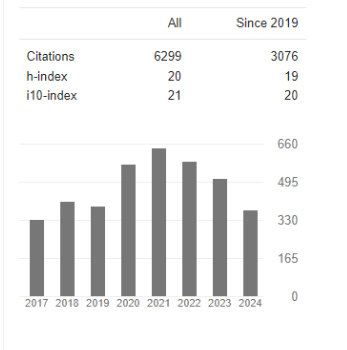Risk Factors Associated with Acute Myocardial Infarction (Mi) in Individuals Reporting at Tertiary Care Hospitals in Karachi
Abstract
Gulzar Ali Buriro, Syed Rohan Ali, Fatima Amin Moti, Tanzeel Guzdar, Ghulam Muhammad, Sawera Khan and Fawad Farooq
Background: Cardiovascular diseases have a multifactorial etiology, including hypertension, diabetes, stress, smoking, dyslipidemia, and positive family history. Among these, acute myocardial infarction remains one of the most life-threatening conditions that can lead to post-MI complications or death.
Objective: To determine the risk factors associated with acute myocardial infarction in patients presenting at tertiary care hospitals in Karachi.
Method: A cross-sectional study was conducted on a sample of 377 patients with acute myocardial infarction. The sample was obtained through non-probability purposive sampling from Dr. Ruth K. M. Pfau Civil Hospital Karachi and the National Institute of Cardiovascular Diseases (NICVD) Karachi. Informed verbal consent was obtained. A pilot study was conducted to assess the validity of the questionnaire. Data was analyzed using SPSS version 22 with a 95% confidence interval, a margin of error of 5%, and a p-value of 0.05 as significant.
Results: The study characterized patient demographics and assessed the prevalence of various health factors among individuals presenting with acute myocardial infarction at tertiary care hospitals in Karachi. Among the 377 patients analyzed, 40.3% were aged 56-65 years (152 individuals). Males represented 57.8% (218) of the sample, while females accounted for 42.2%. Hypertension was present in 77.7% of participants, and 52.5% were smokers. Diabetes was observed in 36.3% of participants, and 38.2% reported dyslipidemia. Additionally, 67.4% had a positive family history of MI, and only 9.5% engaged in regular exercise. Whisky consumption was reported by 19.6%, and 60.5% had undergone surgical procedures.
Significantly, male participants exhibited a higher prevalence of smoking (83%) compared to females (10.69%) (p-value = 0.000). Alcohol consumption was also notably higher in males (30.7%) compared to females (4.40%) (p-value = 0.000). Surgical procedures were more prevalent among females (77.35%) compared to males (48.16%) (p-value = 0.000). There was a significant association between age groups and the presence of hypertension, diabetes, and dyslipidemia (p-values = 0.000, 0.001, and 0.000, respectively), suggesting variations in prevalence across different age brackets.
Conclusion: The study highlights the prevalence of various health factors among the sampled population, with significant gender disparities observed in smoking, alcohol consumption, and surgical procedures. Understanding these factors is crucial for implementing targeted interventions and public health initiatives to address prevalent health issues within the community. Further research may explore the underlying factors contributing to these disparities and develop effective strategies for health promotion and disease prevention.




